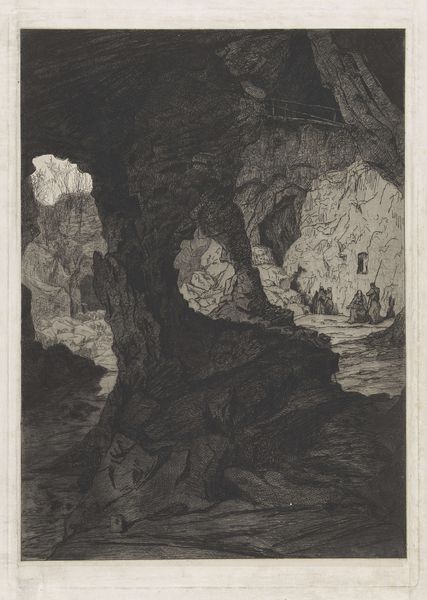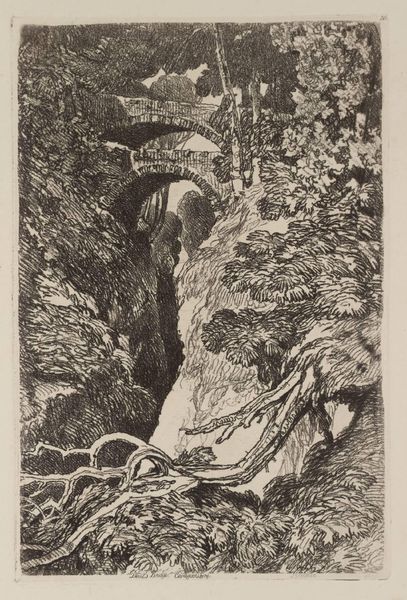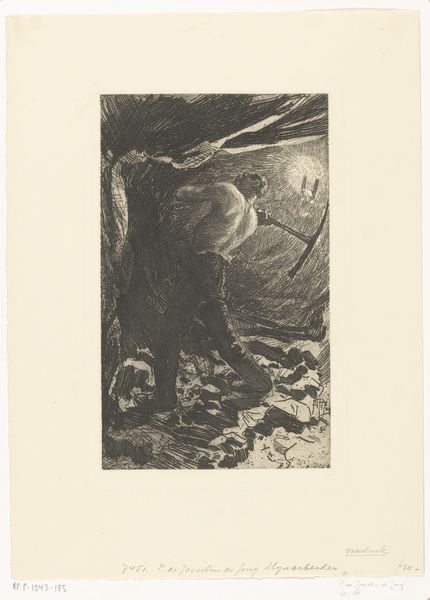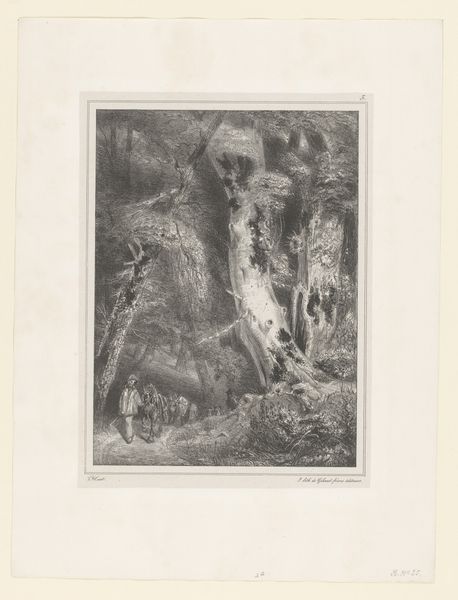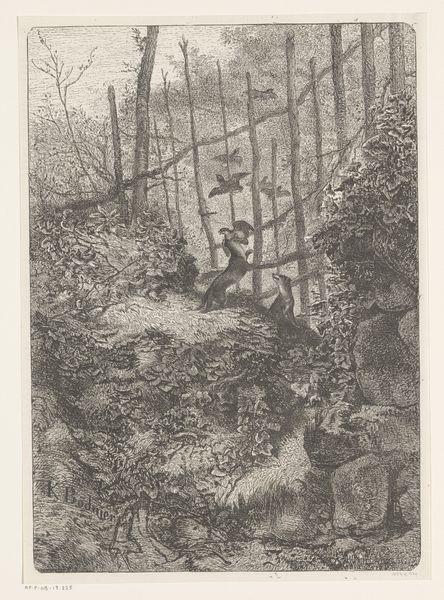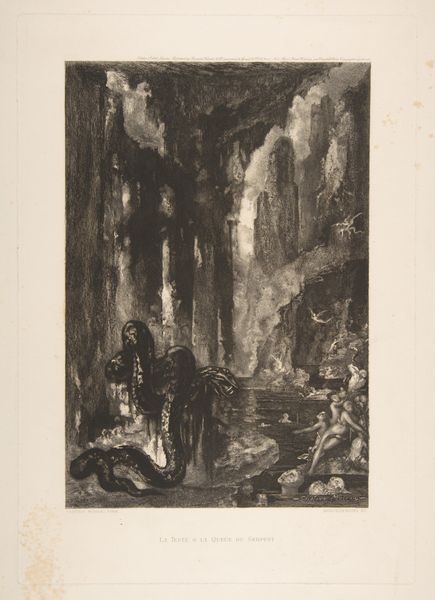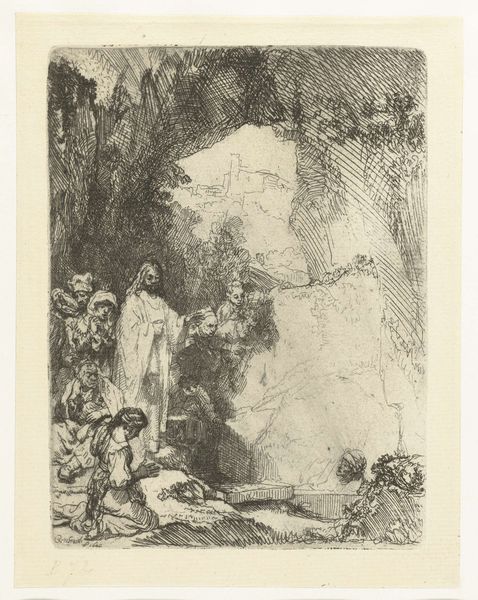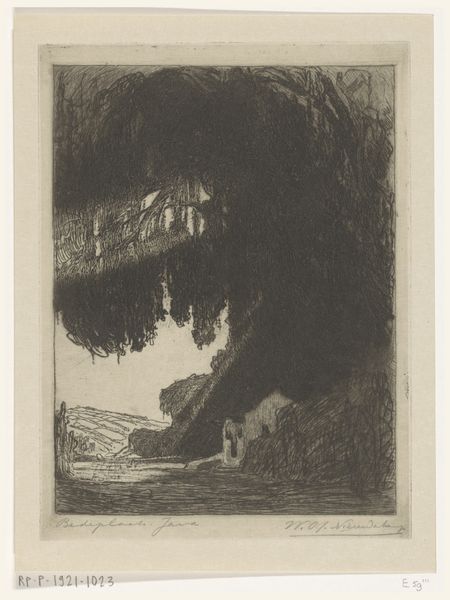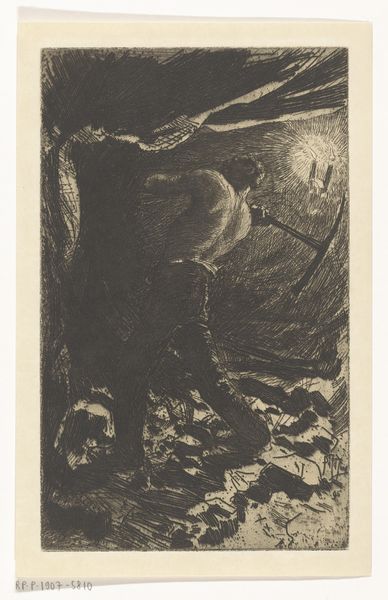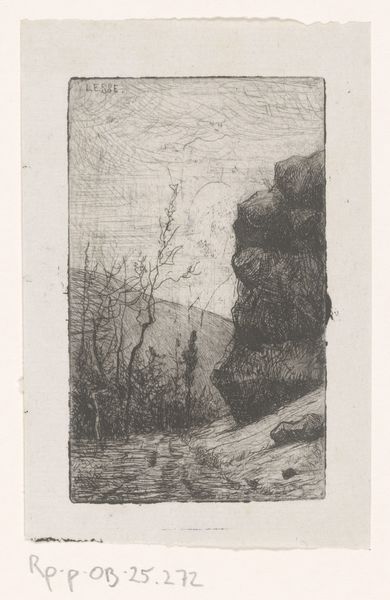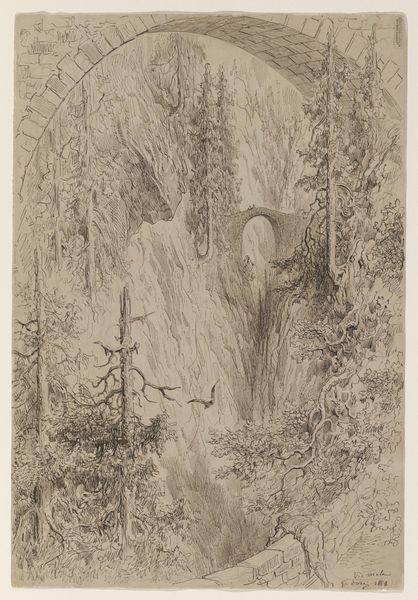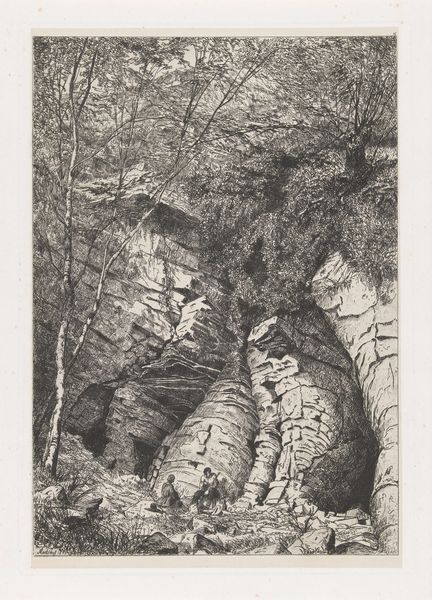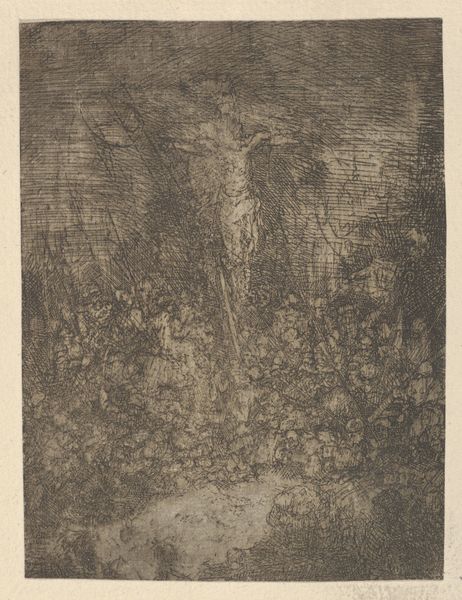
Dimensions: height 235 mm, width 231 mm
Copyright: Rijks Museum: Open Domain
Curator: The first thing that strikes me is how cavernous it feels. There’s a primal darkness here, and then the shimmering, almost spectral light on those formations. Editor: You've put your finger on something central to this etching. What you are observing is Martinus Antonius Kuytenbrouwer Jr.’s “Zaal in de grotten van Han,” dating back to 1854, currently held at the Rijksmuseum. It encapsulates the Romantic fascination with the sublime. Curator: Yes, the sublime! The image conveys a human presence rendered insignificant against the geological timescale. The stalactites become symbolic—are they ancient tears? Frozen time? The way they drip suggests nature in a state of perpetual, albeit glacially slow, transformation. Editor: Consider the public for whom Kuytenbrouwer produced this image. The burgeoning middle class desired access to culture, but perhaps could not visit the caves. So this etching—a reproducible image—allows for a democratizing of the sublime experience. A sort of, art souvenir, if you will. Curator: Absolutely. The image, in its symbolism, serves as a memento, a stand-in for the "real" experience of awe and fear when standing in the presence of immense power, the chthonic power beneath the earth. But the lone figure with their light also sparks a sense of curiosity. What psychological impulse drives us to explore such places? Editor: Well, isn’t that part of Romanticism’s cultural project? This search for emotional extremes through encounters with raw nature—but then translating that experience through artistic interpretation, and in Kuytenbrouwer’s case, distributing those encounters broadly through the relatively new technology of printmaking. It shapes both personal and collective memories of landscape and history. Curator: It's interesting to consider the visual continuity of "cave" imagery, from Plato's cave allegories to contemporary media. Our continued return to the symbol of the cave speaks to a collective need to confront the hidden, the unconscious, and to explore what lies beneath the surface, literally and metaphorically. Editor: Indeed. In some respects, it still holds true to our collective cultural awareness even to this day. A fascinating demonstration of cultural and visual memory embedded in a seemingly simple etching.
Comments
No comments
Be the first to comment and join the conversation on the ultimate creative platform.
